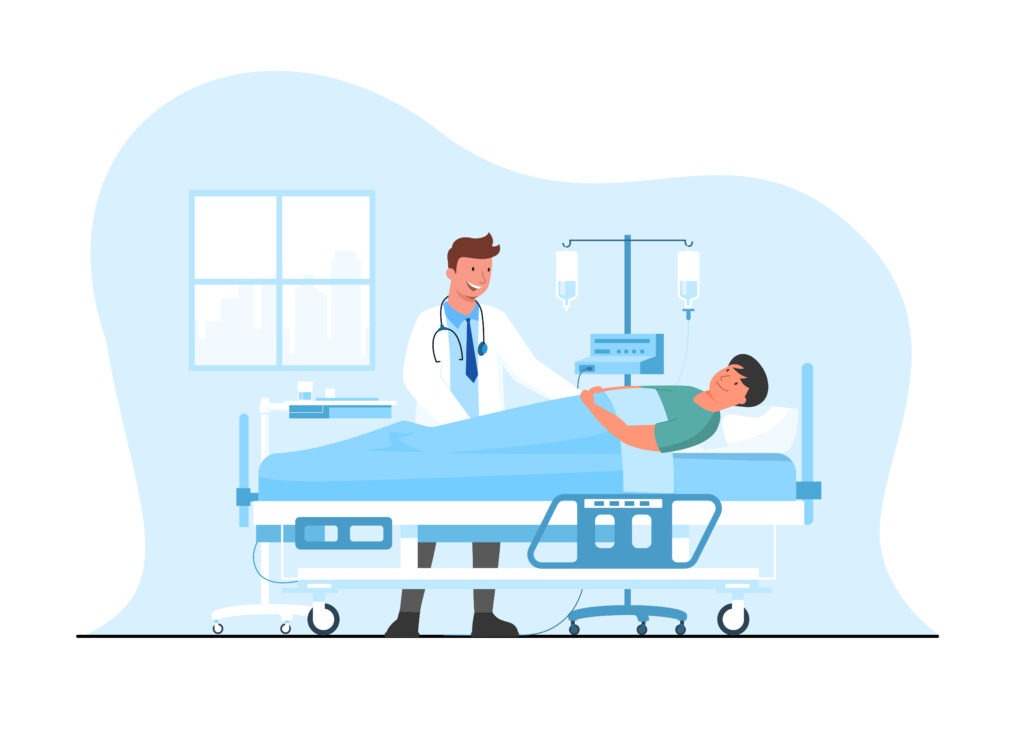What are the types of Dialysis for Kidney & Who needs it?

Healthy kidneys are important for filtering waste products and fluids from the body. Dialysis is needed when you kidney stop working. It often involves diverting blood to a machine that cleans it, making it useful again.
Normally, the kidneys filter the blood, removing harmful waste products and excess fluid and turning it into the urine.
Table of contents
Why do we need dialysis for the Kidney?
If your kidneys are not working well – for example, because you have chronic kidney disease - the kidneys may not be able to properly clean your blood.
When the fluids and waste products in your body accumulate to dangerous levels, it could cause a string of nasty symptoms. When not treated quickly enough, this can even lead to death.
The span of dialysis of the kidney
Dialysis is sometimes temporary and can be stopped once your kidneys recover.
But sometimes, someone with kidney failure will need a kidney transplant
It’s often not an easy task to carry out a kidney transplant, so someone may need dialysis until a suitable donor becomes available.
If you are not in any condition to undergo a kidney transplant- for example, if you’re not well enough to have a major operation- then dialysis may be what you require for the rest of your life.
Types of Dialysis of Kidney
There are two main types of dialysis: hemodialysis and peritoneal dialysis.
Hemodialysis
Dialysis is one of the most common types of therapies for chronic kidney disease and this is the kind most people are familiar with.
When the process is done, a tube is connected to your arm with a needle.
Filtration of your blood happens by an external machine before it’s send back into your arm.
You’ll typically need to visit a dialysis center 3 days a week for about 4 hours for each session.
Home dialysis scheduling is also a possibility. In this case, some examples of a viable home schedule include:
- 4 times a week for 4 hours
- 5 times a week for 3 hours
- 6 days per week for 8 hours
Peritoneal dialysis
Peritoneal dialysis for kidney means the inside lining of your abdomen a filter, rather than a machine
The peritoneum possesses millions of tiny blood vessels, making it a useful filtering device.
Before you start treatment, makes a cut near your belly button and a thin tube, a catheter is put through the incision and into the space inside your abdomen. This is left in place permanently.
Fluid is pumped into the peritoneal cavity through a catheter. As blood passes through the blood vessels in the peritoneal cavity, it will be filtered. This will allow any waste products and excess fluid to be removed from the blood and drawn out into dialysis fluid.
The used fluid is drained into a bag a few hours later and replaces it by fresh fluid.
Changing the icky fluids usually takes about 30 to 40 minutes and is something that you have to do around 4 times a day.
You can do this task quickly, hassle-free, and automatically if you prefer.
Which type of dialysis is best?
You can choose to have the type of dialysis you prefer and at a location that is most convenient for you.
Which technique is best for you will depend on what you need. It’s worth looking into each of the pros and cons available before deciding.

For example:
- HD sessions provide 4 treatment-free days a week but the treatments last longer and often require hospital visits each time.
- home-administered hemodialysis – you might need more frequent sessions, but it will be easy to fit them around your schedule and your needs.
- Peritoneal dialysis is a common therapy for those with kidney failure, and can do it at home. It’s a good option if you’re particularly in a worry about being in hospital but still want to live actively. This method does require daily care, though.
Choosing the type of dialysis therapy you want is important. Discussing the different factors with your care team will help you make a decision.
Side effects of dialysis
Hemodialysis can cause itchy skin and muscle cramps. Peritoneal dialysis puts you at risk of developing peritonitis. It’s a type of infection in the thin membrane that surrounds your abdomen.
Both types of dialysis have their pitfalls. In particular, they may leave you feeling exhausted.
Life on dialysis
A lot of people on hemodialysis are generally happy with their quality of life.
“Dialysis can be life-saving for people with kidney failure, but unfortunately the treatment doesn’t fully replace a patient’s organs.”
Takeaway
If you have a malfunctioning kidney you’ll be at risk for some serious health problems.
With dialysis, people with kidney disease can have a chance of living and being healthy again. Older people and those with other health problems are most at risk of this happening.
Dialysis starts for most patients in their late 20s and lasts for at least a few decades. But if over 75, a patient might only live between 2 to 3 years depending on their health conditions.
Dialysis has been around for decades and improvements in technology will only improve the likelihood that this method of treatment being used to survive.
Products That We Suggest for you
Vitapost Kidney Support for Healthy Kidneys
Give your kidneys, bladder and urinary tract extra nutrition with VitaPost Kidney Support.
To know more and purchase, Click Here
Confitrol24- Bladder Control
Millions of women struggle with poor bladder control. You no longer have to be one of them, thanks to Confitrol24”
To know more and purchase, Click Here








Comment to this Article
Comments that encourage respectful conversation are welcomed at AGP Health n Beauty. Stay on subject, please. Comments that are aggressively promotional of goods or services or that include personal attacks, vulgar language, or other forms of abuse will be deleted. Which remarks break our comment policy will be decided at our discretion. (Anonymous comments are accepted; just leave out your name in the comment box. Although necessary, your email address won't be posted with your comment.)